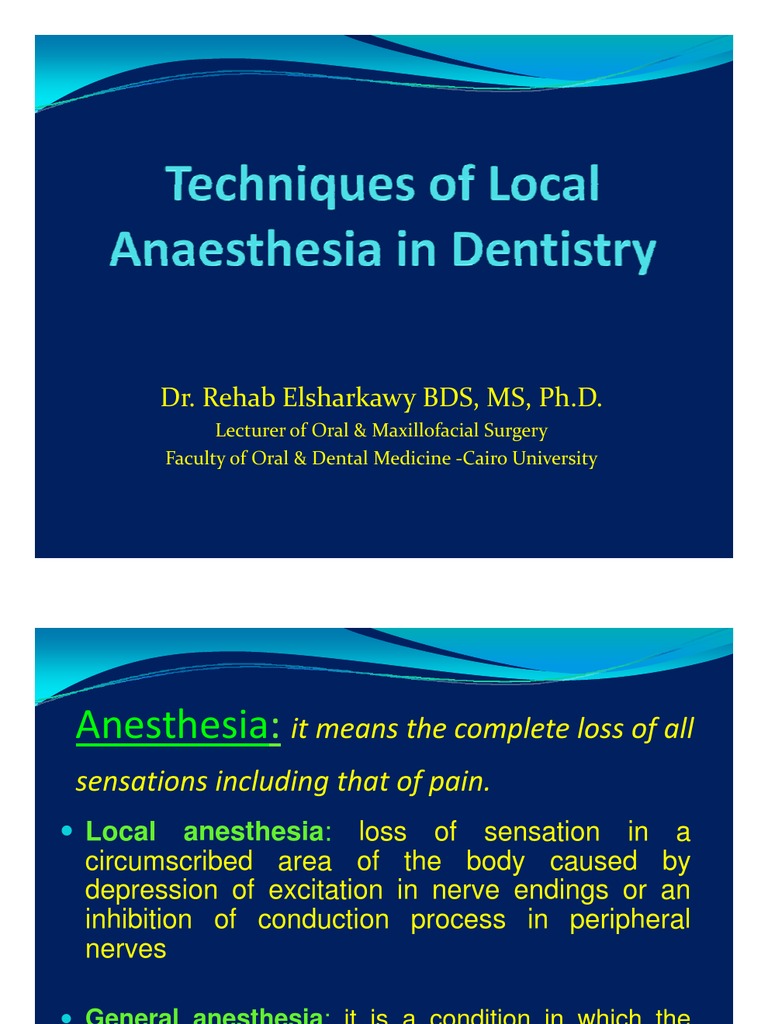
Mastering Anesthesia: Techniques for Safe and Effective Procedures
Exploring Anesthesia Techniques for Safe Medical Procedures:
Anesthesia plays a crucial role in modern medicine, enabling a myriad of medical procedures by ensuring patient comfort and safety. Understanding and mastering various anesthesia techniques is essential for healthcare professionals to execute procedures effectively while prioritizing patient well-being.
Local Anesthesia:
One of the foundational techniques in anesthesia is local anesthesia. This method involves administering medication to a specific area of the body, resulting in temporary numbness. It is commonly used for minor procedures, such as dental work or skin surgeries. Local anesthesia allows patients to remain conscious while ensuring they experience minimal discomfort during the procedure.
Regional Anesthesia:
For more extensive procedures or surgeries involving a larger area of the body, regional anesthesia comes into play. This technique involves blocking sensation in a specific region, such as an entire limb or a section of the body. Epidurals during childbirth or nerve blocks for orthopedic surgeries are examples of regional anesthesia. This technique provides pain relief without rendering the patient completely unconscious.
General Anesthesia:
General anesthesia is perhaps the most well-known technique, inducing a state of unconsciousness and loss of sensation throughout the entire body. This is crucial for complex surgeries or procedures where the patient needs to be completely unaware and unresponsive. Administered through inhalation or intravenous injection, general anesthesia demands precise dosage and constant monitoring to ensure patient safety.
Balancing Sedation:
Beyond these primary techniques, anesthesiologists often utilize sedation to keep patients relaxed and comfortable during procedures. Conscious sedation, a milder form, allows patients to respond to stimuli while maintaining a state of calm. Balancing the depth of sedation is a nuanced skill, ensuring the patient is at ease without compromising the success of the procedure.
Monitoring Vital Signs:
Regardless of the anesthesia technique employed, continuous monitoring of vital signs is paramount. Anesthesiologists closely track heart rate, blood pressure, oxygen levels, and other crucial parameters throughout the procedure. This vigilant oversight ensures immediate intervention in case of any deviations from the norm, guaranteeing patient safety.
Emerging Technologies in Anesthesia:
Advancements in medical technology have also influenced anesthesia techniques. From the use of advanced monitoring devices to precision-controlled anesthesia delivery systems, technology contributes to increased accuracy and safety in administering anesthesia. Staying abreast of these innovations is crucial for modern anesthesia practitioners.
Tailoring Anesthesia to Patient Needs:
Every patient is unique, and tailoring anesthesia to individual needs is a fundamental aspect of the practice. Factors such as age, health status, and previous medical history influence the choice of anesthesia technique. Anesthesia practitioners must consider these variables to optimize patient outcomes.
Education and Training:
Becoming proficient in anesthesia techniques requires rigorous education and training. Anesthesiologists undergo extensive schooling and hands-on training to master the nuances of each technique. Continuous professional development ensures they stay updated on evolving best practices and technologies.
Collaboration in Healthcare:
Anesthesia is a collaborative effort that involves close coordination among various healthcare professionals. Surgeons, anesthesiologists, nurses, and other team members work together seamlessly to ensure the success of medical procedures. Effective communication and teamwork are pivotal in creating a safe and efficient surgical environment.
To delve deeper into the intricate world of anesthesia techniques, visit www.dylanmessaging.com. Understanding and mastering these techniques not only contribute to successful medical procedures but also prioritize the safety and well-being of patients.



